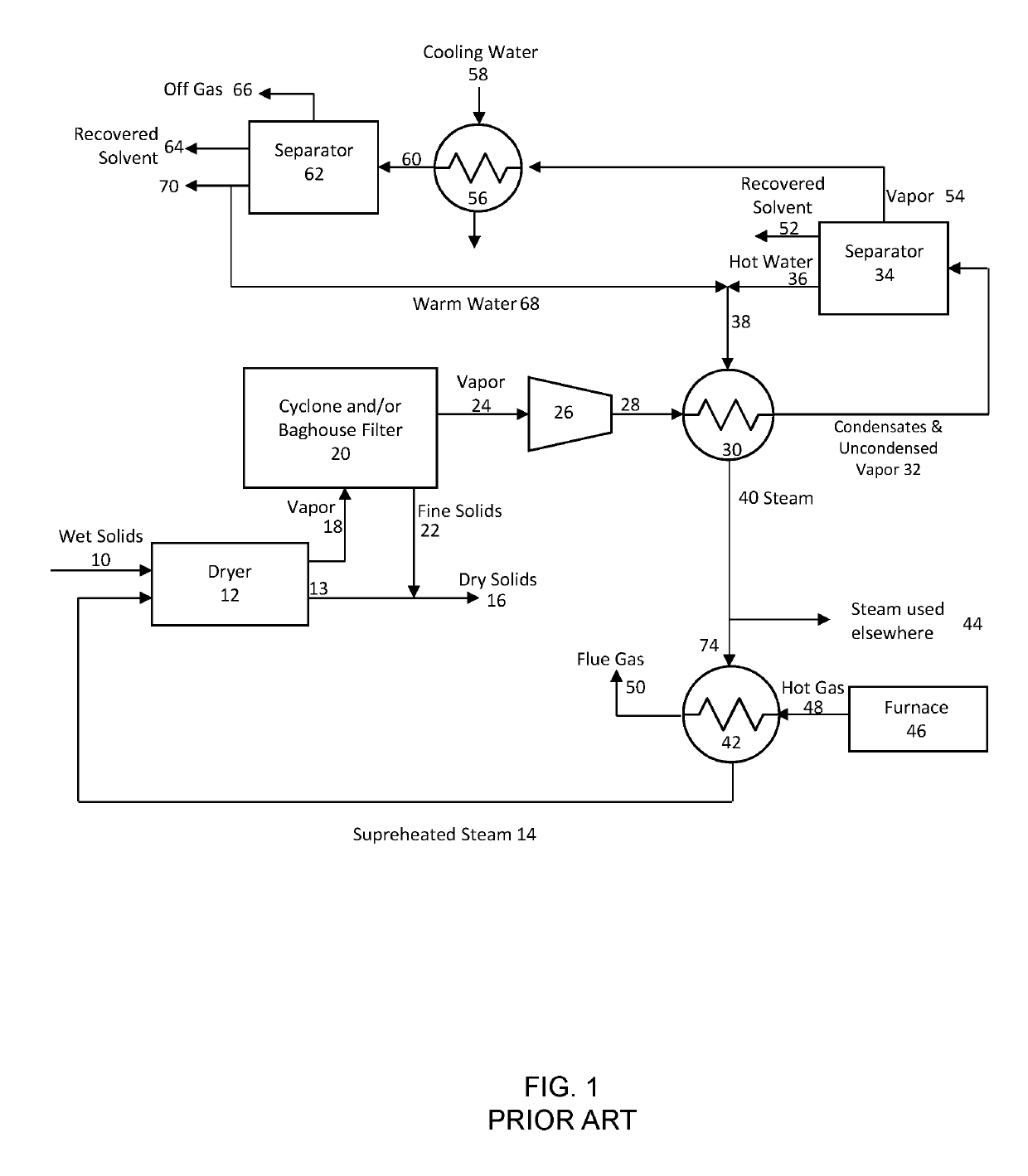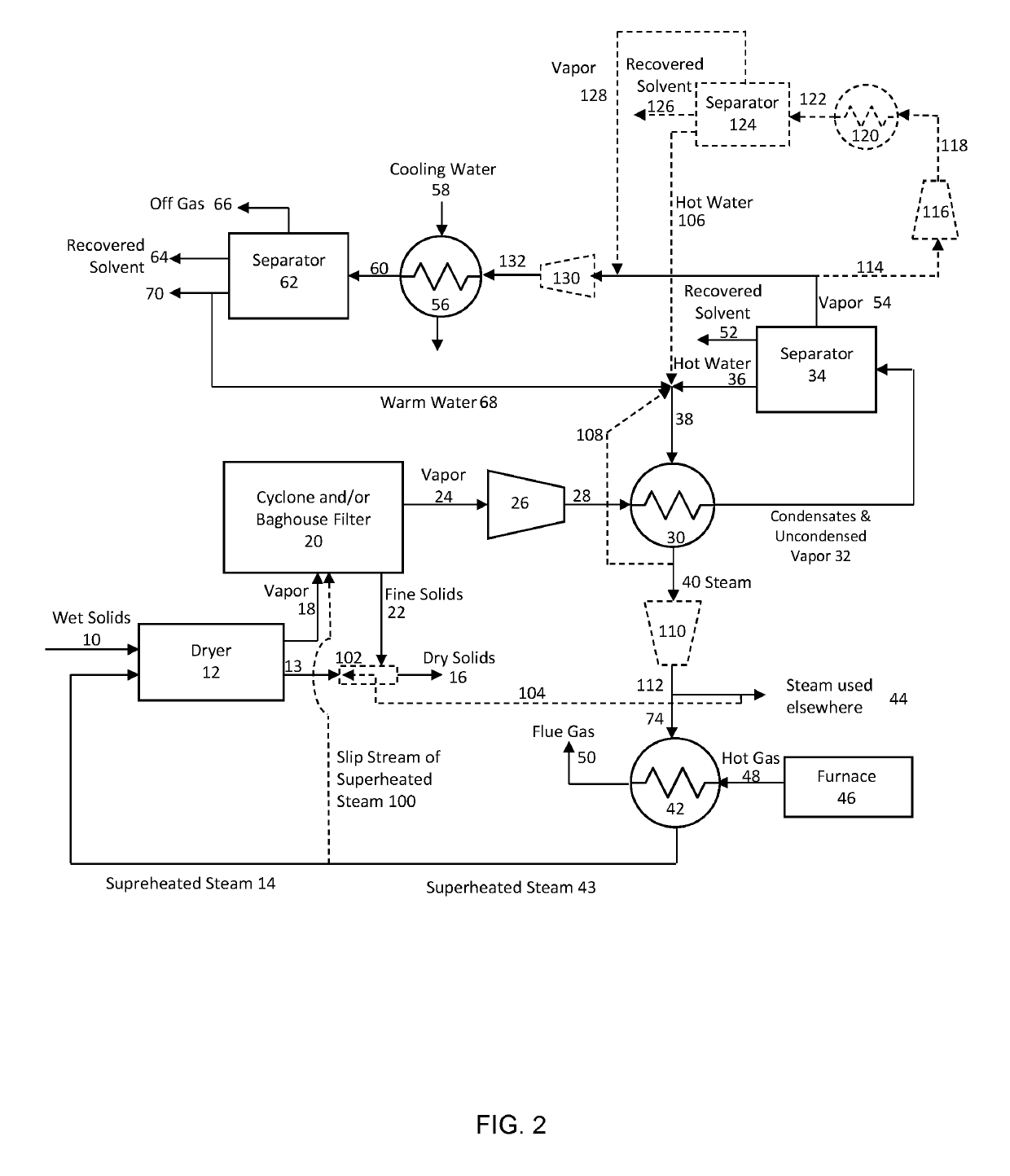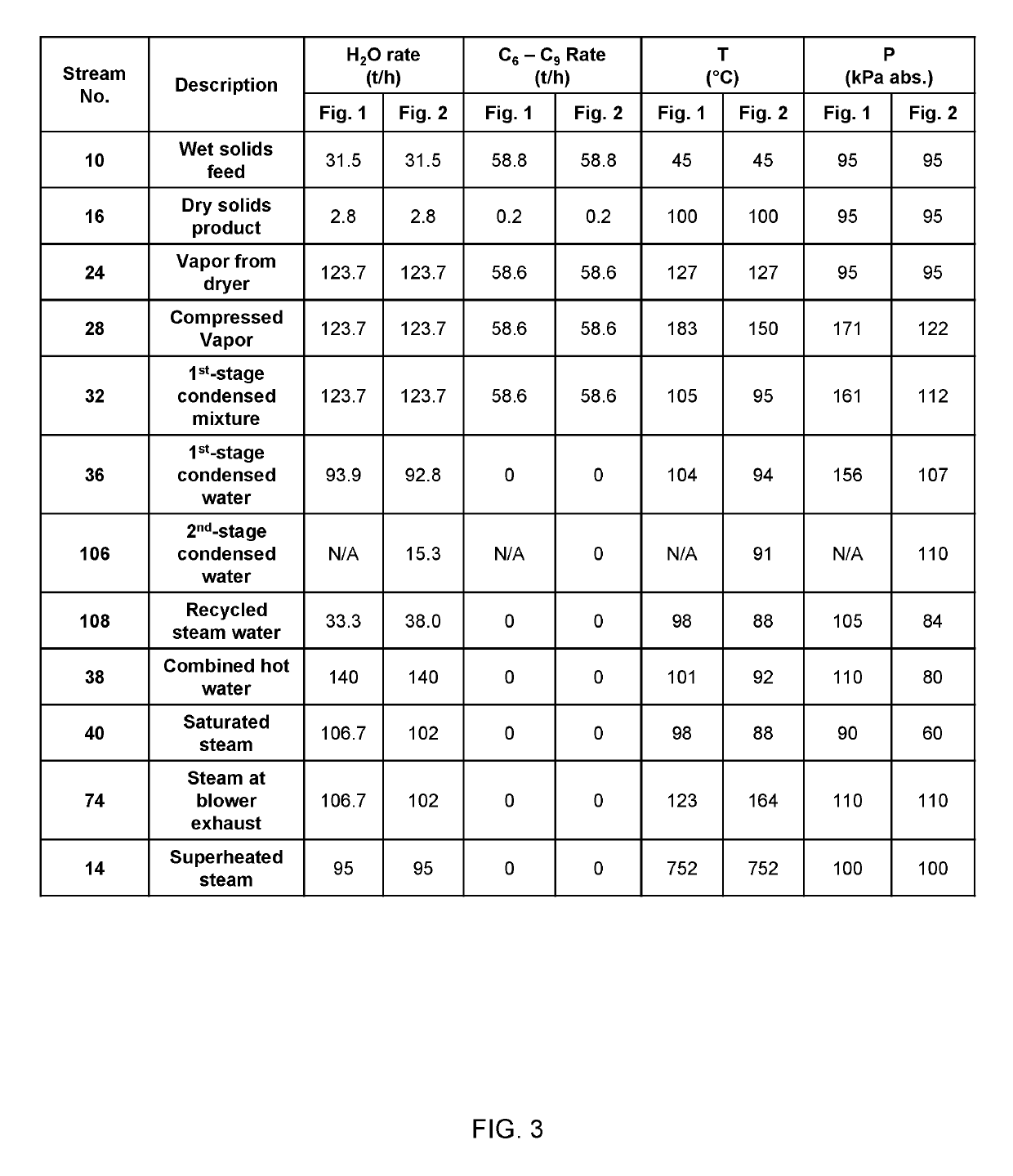Process for separating solvent from spent oil sand solids using superheated steam
- Summary
- Abstract
- Description
- Claims
- Application Information
AI Technical Summary
Benefits of technology
Problems solved by technology
Method used
Image
Examples
Embodiment Construction
[0072]The present invention relates generally to a process of recovering solvent from spent oil sand solids using superheated steam. The invention is particularly useful for recovering solvent having five to twelve carbon atoms per molecule or mixtures thereof including, but not limited to, pentane, hexane, heptane, octane, and nonane. For solvent having ten to twelve carbon atoms per molecule, the process may not completely recovery the solvent, but can be used to partially recover the solvent.
[0073]FIG. 2 is a flow diagram of the process of the present invention. In FIG. 2, elements that are equivalent to the elements shown in FIG. 1 are assigned common reference numerals. Moreover, elements that are shown in dashed line in FIG. 2 indicate elements that are not shown in FIG. 1. The conduits among the various components may be constructed from any suitable piping as is employed in the art. Suitable piping includes, without limitation, plastic piping, galvanized metal piping, and st...
PUM
 Login to View More
Login to View More Abstract
Description
Claims
Application Information
 Login to View More
Login to View More - R&D
- Intellectual Property
- Life Sciences
- Materials
- Tech Scout
- Unparalleled Data Quality
- Higher Quality Content
- 60% Fewer Hallucinations
Browse by: Latest US Patents, China's latest patents, Technical Efficacy Thesaurus, Application Domain, Technology Topic, Popular Technical Reports.
© 2025 PatSnap. All rights reserved.Legal|Privacy policy|Modern Slavery Act Transparency Statement|Sitemap|About US| Contact US: help@patsnap.com



